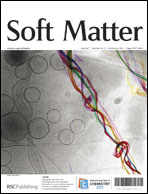Mucus forms a protective layer across a variety of epithelial surfaces, presenting a barrier to the uptake of particulates, including bacteria. In the gastrointestinal (GI) tract the barrier has to permit uptake of nutrients, whilst excluding potential hazards, such as bacteria. We have investigated the abilities of an exemplar food-derived particulate and a model bacterium to diffuse through porcine intestinal mucus as a model system. Transport was dramatically enhanced by adsorption of bile salts (BS), diffusion of 500-nm latex beads through mucus increased by three orders of magnitude over 2 min compared to the absence of BS. The diffusion coefficients, a probe of local mucus microrheology, showed a range of apparent viscosity from 1 mPas to at least 10 PaS. Similar effects of BS adsorption on diffusion were observed for model food emulsion droplets after simulated gastrointestinal digestion. In contrast, a non-motile bacterium, E. Coli, was found neither to diffuse through the mucus nor adhere to the mucus, regardless of the presence of BS. The negative charge imparted by BS adsorption significantly changed the electrostatic interactions with the mucus network, which is also primarily negatively charged. Thus, interfacial BS have a dominant role in determining transport of colloidal particles, including digested fat through the intestinal mucus but do not reduce the ability of the mucus to act as a barrier to bacteria. This information is important for the targeted delivery of bioactive molecules, including nutrients and pharmaceuticals and for understanding how GI health is maintained.

You have access to this article
 Please wait while we load your content...
Something went wrong. Try again?
Please wait while we load your content...
Something went wrong. Try again?


 Please wait while we load your content...
Please wait while we load your content...